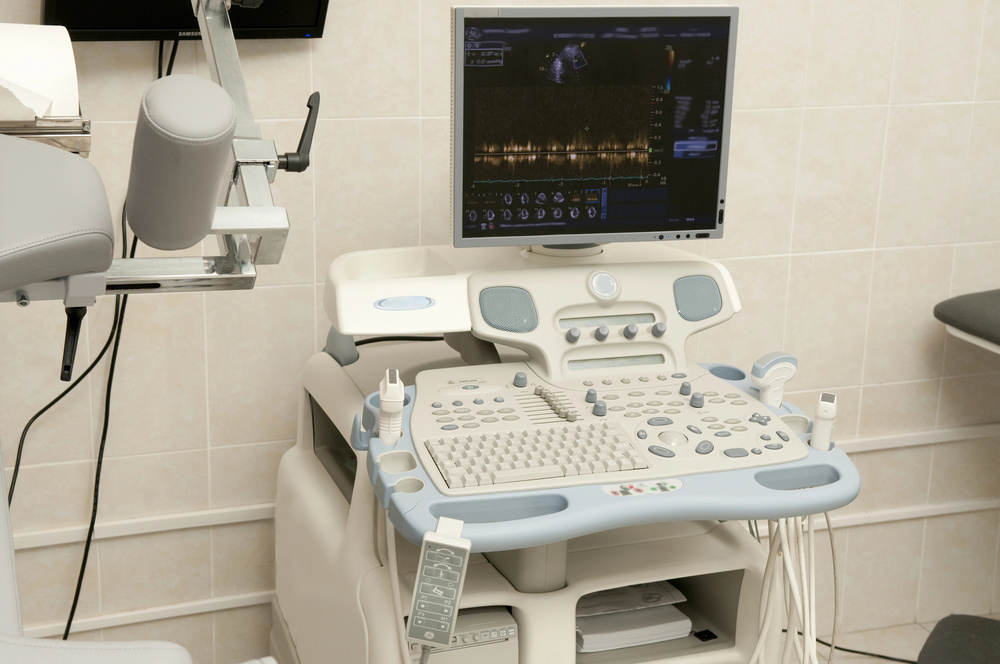
Key Signs It's Time To Upgrade Ultrasound Equipment
In medicine, human aging is a well-studied phenomenon. But the impact of using dated machines isn't discussed enough.
Ultrasound technology has become the mainstay for non-invasively monitoring pregnancies, diagnosing conditions, and guiding procedures. It uses high-frequency sound waves to create detailed images of the body's internal structures.
But like all technology, staying current with the times is essential to maintaining optimal performance. Let's explore the advantages of regular updates and how to tell when it's time for an upgrade.
Why Is It Important To Have Up-to-Date Imaging Equipment?
Recent advancements in ultrasound technology include enhanced image resolution, 3D and 4D imaging, portable devices, and improved Doppler capabilities. These upgrades promise clear and detailed visuals, enable real-time monitoring, and increase diagnostic accuracy.
Updated equipment tends to include advanced features and improved functionality, allowing for quicker and more comprehensive scans. This enhances patient care and increases the efficiency of medical procedures.
Additionally, up-to-date equipment is more reliable and less prone to malfunctions. This greatly reduces downtime and maintenance costs. Staying on top of technological advancements allows healthcare practitioners to offer the highest standard of care, keep pace with medical innovations, and improve patient outcomes.
6 Factors That Should Prompt an Upgrade of Your Ultrasound Machines
The ideal time to upgrade ultrasound equipment depends on technological advancements, equipment performance, budget, patient demand, and regulatory compliance. Regular assessments of these factors can help you identify the appropriate timing for upgrading while aligning with your practice goals and regulatory standards.
Now that we agree that updated equipment is the cornerstone to optimal functionality and productivity in healthcare settings, let's discuss six indicators that can signal it's time for an upgrade.
1. Decreased Image Quality
Clear images are vital to diagnosing conditions through ultrasound. Poor image quality can easily derail diagnostic efficiency if not identified on time. Here are some reasons image quality may suffer.
Blurry or Grainy Images
Poor visual resolution seems to be a universal sign of old age. Outdated ultrasound equipment can produce blurry or grainy images, making it difficult to diagnose medical conditions accurately. Improved resolution in newer models can produce better-quality images so that even the tiniest details won't be missed. This boost in image quality means better diagnostic accuracy and more effective treatment plans.
Inconsistent Image Results
Older ultrasound machines may yield inconsistent image results, leading to potential misdiagnoses or the need for repeated scans. Upgrading to the latest technology ensures more reliable and consistent imaging. This cuts down on the risk of errors and enhances the quality of patient care.
2. Decreased Productivity
Investing in new technology can boost patient flow and enhance operational efficiency. However, the following factors can counter that efficiency, warranting an upgrade.
Longer Boot-Up and Processing Times
Older machines have longer boot-up and processing times, which can delay patient care and reduce the number of daily scans. Upgrading to newer models speeds up these processes, resulting in enhanced workflow efficiency and patient throughput.
Frequent Freezes and Crashes
Older equipment is also more prone to freezing and crashing. This disrupts examinations and frustrates both patients and healthcare providers. An upgrade can minimize these interruptions, ensure smoother operations, and boost productivity.
3. Increased Need for Maintenance and Repair
Another universal old age principle seems to be the need for gentle handling and increased care. Similarly, elderly machines require frequent maintenance and repairs, leading to significant financial burdens. The cost of repeated fixes combined with the downtime during repairs can disrupt patient care and reduce overall clinical efficiency.
This issue is further compounded by the following aspects.
Availability of Spare Parts
As ultrasound technology advances, spare parts for older-generation models become harder to find. This scarcity can delay repairs and increase costs, making it more practical to invest in newer equipment. Switching to current models ensures access to readily available parts and support, which can eliminate service interruptions.
4. Limited Functionality and Features
The latest features in ultrasound equipment offer advanced capabilities like:
- Enhanced imaging quality
- Organized workflows
- Connectivity with healthcare systems
- Ongoing training options
But the following concerns can deprive your practice of experiencing these features.
Outdated Software
Outdated software in medical equipment limits advanced capabilities, hindering diagnostic accuracy and process efficiency.
Up-to-date software is crucial for unlocking new features and enhancing patient care. Regular updates ensure equipment can utilize modern technology fully to optimize healthcare quality.
5. Compliance and Safety Standard Concerns
Societal rules keep us in line and turn chaos into harmony. In the same way, keeping medical equipment up-to-date with current regulatory and safety standards ensures patient safety and compliance with legal requirements.
Using non-compliant equipment poses significant risks, including inaccurate diagnostics, potential harm to patients, and legal liabilities for healthcare providers.
Regular updates and maintenance guarantee that equipment meets the latest standards. This facilitates reliable performance and safeguards the interests of both patients and medical professionals.
6. Interface-Related Issues
Dated ultrasound machine interfaces were often complex and required extensive training to maneuver, leading to operator fatigue and potential errors. In contrast, modern ultrasound interfaces feature user-friendly designs with intuitive controls, streamlined workflows, and advanced automation.
These advancements reduce work-induced exhaustion by simplifying tasks, improving performance, and lowering the likelihood of errors. Thus, all these contributing factors improve patient care by promoting operator comfort and supporting rapid and specific diagnostics.
How New Equipment Can Transform Your Practice
Upgrading ultrasound machines offers several benefits:
- Improves diagnostic accuracy: Current machines provide higher-resolution images and advanced features, leading to more precise diagnoses.
- Enhances workflow and efficiency: Modern interfaces streamline processes, reducing operator fatigue and improving overall efficiency.
- Lowers maintenance costs: The latest equipment is often more reliable, requiring fewer repairs and reducing long-term maintenance expenses.
- Is more energy-efficient: Upgraded machines can conserve energy better, saving on operational costs.
- Allows access to the latest training: Newer machines often come with training opportunities, ensuring staff are up-to-date with the latest technology and operational techniques.
Upgrade Your Practice With Advanced Ultrasound Solutions
Stay at the forefront of medical diagnostics by investing in modern ultrasound technology.
Premier Ultrasound can provide new equipment that is updated every 3-5 years along with highly skilled sonographers to ensure access to advanced technology and exceptional service for our clients.
Ready to take your practice into the future? Contact our staff today to help you select the latest equipment that is best suited to your clinical needs.




